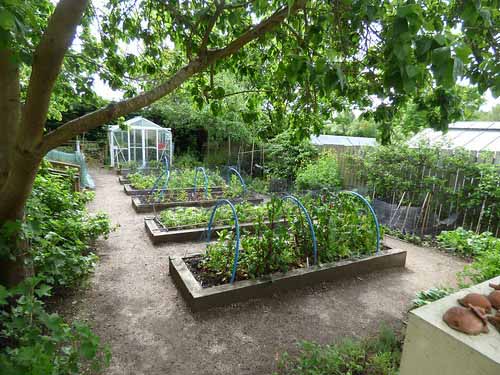Recently, I stumbled upon inquiries from gardening enthusiasts pondering a common question:
What is the best garden layout?
The best garden layout depends on various factors such as available space, climate, soil type, and personal preferences. However, some key considerations for an optimal garden layout include:

Understanding Your Garden Space:
Before diving into the specifics of garden layout design, it’s essential to assess and understand your garden space thoroughly. Take note of the size and shape of your garden area, as well as any existing features such as trees, structures, or pathways. Consider factors such as sunlight exposure throughout the day and any microclimates that may exist within your garden space.
Sunlight Exposure and Plant Placement:
One of the most critical factors in garden layout design is sunlight exposure. Different plants have varying sunlight requirements, so it’s essential to plan your garden layout accordingly. Here are some tips for optimizing sunlight exposure in your garden:
- Place taller plants, such as tomatoes and sunflowers, on the northern side of your garden beds to prevent shading shorter plants.
- Position sun-loving crops, such as peppers and cucumbers, in areas with maximum sunlight exposure, typically on the southern or western side of your garden.
Companion Planting for Success:
Companion planting involves planting different crops together to enhance growth, repel pests, and improve overall plant health. By strategically pairing compatible plants, you can create a thriving ecosystem within your garden. Here are some popular companion planting combinations:
- Plant tomatoes with basil to improve tomato flavor and deter pests like aphids and tomato hornworms.
- Pair marigolds with vegetables like tomatoes, peppers, and eggplants to repel nematodes and other soil-borne pests.
- Interplant onions or garlic with carrots to deter carrot fly and other pests while enhancing flavor.
Crop Rotation for Soil Health:
Crop rotation is a vital practice in sustainable gardening that involves rotating crops annually to prevent soil depletion and minimize pest and disease buildup. By rotating crops, you can maintain soil fertility, reduce the risk of soil-borne diseases, and improve overall garden productivity. Here are some key principles of crop rotation:
- Group plants from the same family together and rotate them with unrelated crops to prevent nutrient depletion and soil exhaustion.
- Avoid planting crops from the same family in the same location year after year, as this can lead to the buildup of pests and diseases specific to that plant family.
Creating Accessible Pathways:
Incorporating well-designed pathways into your garden layout is essential for accessibility, maintenance, and aesthetic appeal. Pathways provide easy access for planting, weeding, watering, and harvesting, while also defining garden borders and separating different planting areas. Here are some tips for creating accessible pathways in your garden:
- Design pathways wide enough to accommodate foot traffic, wheelbarrows, or garden carts, typically ranging from 18 inches to 36 inches wide.
- Use durable materials such as gravel, mulch, paving stones, or wood chips to create stable and low-maintenance pathways that blend seamlessly with your garden design.
Efficient Watering and Irrigation Systems:
Watering is a critical aspect of garden care, and implementing efficient irrigation systems can help conserve water, reduce labor, and promote healthy plant growth. Consider the following options for watering and irrigation in your garden:
- Install drip irrigation or soaker hoses to deliver water directly to plant roots, minimizing water wastage and reducing the risk of fungal diseases.
- Group plants with similar water requirements together to simplify irrigation and ensure optimal moisture levels for each plant.
Embracing Vertical Gardening:
Vertical gardening is an excellent way to maximize space and productivity in small garden areas while adding visual interest and dimension to your garden design. By utilizing vertical space, you can grow a wide range of crops, including vining plants, herbs, and flowers. Here are some ideas for incorporating vertical gardening into your garden layout:
- Install trellises, arbors, or pergolas to support climbing plants such as beans, peas, cucumbers, and squash.
- Use hanging baskets, wall-mounted planters, or vertical gardening systems to grow herbs, strawberries, and trailing flowers.
Conclusion:
Designing the perfect garden layout requires careful planning, creativity, and attention to detail. By considering factors such as sunlight exposure, companion planting, crop rotation, accessibility, irrigation, and vertical gardening, you can create a thriving and visually stunning garden space. Experiment with different layouts and techniques, and don’t be afraid to adapt and evolve your garden design over time. With patience, passion, and a green thumb, you can cultivate a garden that brings joy, beauty, and bountiful harvests for years to come.
- Best Brush Cutter: Top 5 Models for Lawn Maintenance in 2024 - January 10, 2024
- Protecting Your Garden from Rodent Damage: Tips and Tricks - December 14, 2023
- Small Space Gardening: Transform Your Garden with Raised Beds - December 10, 2023
